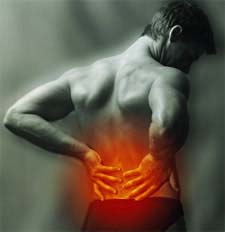Magnets for lower back pain?
 My thought about this study is that considering the academic and research “pedigree” of the authors (ie, National Institute of Mental Health, National Center for Complementary and Alternative Medicine [NCCAM], National Institute for Dental and Craniofacial Research, and Columbia University), why did they settle for such a rudimentary study design?
My thought about this study is that considering the academic and research “pedigree” of the authors (ie, National Institute of Mental Health, National Center for Complementary and Alternative Medicine [NCCAM], National Institute for Dental and Craniofacial Research, and Columbia University), why did they settle for such a rudimentary study design?
When you get to the end of this post, consider if this study advanced the state of our knowledge on this topic.
First, some background.
Biomagnet power is measured in terms of gauss (G). The earth’s surface is approximately 0.5 G. Here are typical magnetic strength classifications
- Low gauss = 300 – 700 G
- Medium gauss = 1000 – 2500 G
- High gauss = 3000 – 6000 G
- Super gauss = 7000 – 12000 G
Now, the details.
- The pain-relieving efficacy of static magnetic fields was compared in 40 patients with chronic lumbar radicular pain — the most common neuropathic pain syndrome.
- The surface field strengths of the magnets were 200 G and 50 G.
- All patients received both treatments in random order and were unaware of the order.
- Phase I included 4 random periods of 2-week duration: 2 periods with 200 G, 1 period with 50 G, and 1 period of “no treatment.”
- The magnets were positioned either vertically or horizontally in standard lumbosacral elastic corsets.
- Phase II consisted of 2, 5-week periods with the most effective magnet from Phase I and its corresponding 50 or 200 G device.
And the results.
- In Phase I, pain scores did not differ significantly between 200 and 50 G magnets.
- Phase II average leg-pain scores were significantly lower with 200 vs. 50 G magnets.
- Using a 10-point scale, with 10 = greatest pain (3.2 for 200 G vs. 3.9 for 50 G magnets)
The bottom line?
The authors concluded, “Although these data cannot rule out a chance effect, the positive trends suggest that larger, longer-duration, sham-controlled trials with 200G magnets be considered in patients with chronic lumbar radicular pain.”
Scientific research does not support using magnets of any type to relieve pain, according to NCCAM. This study doesn’t change that reality.
9/4/07 19:26